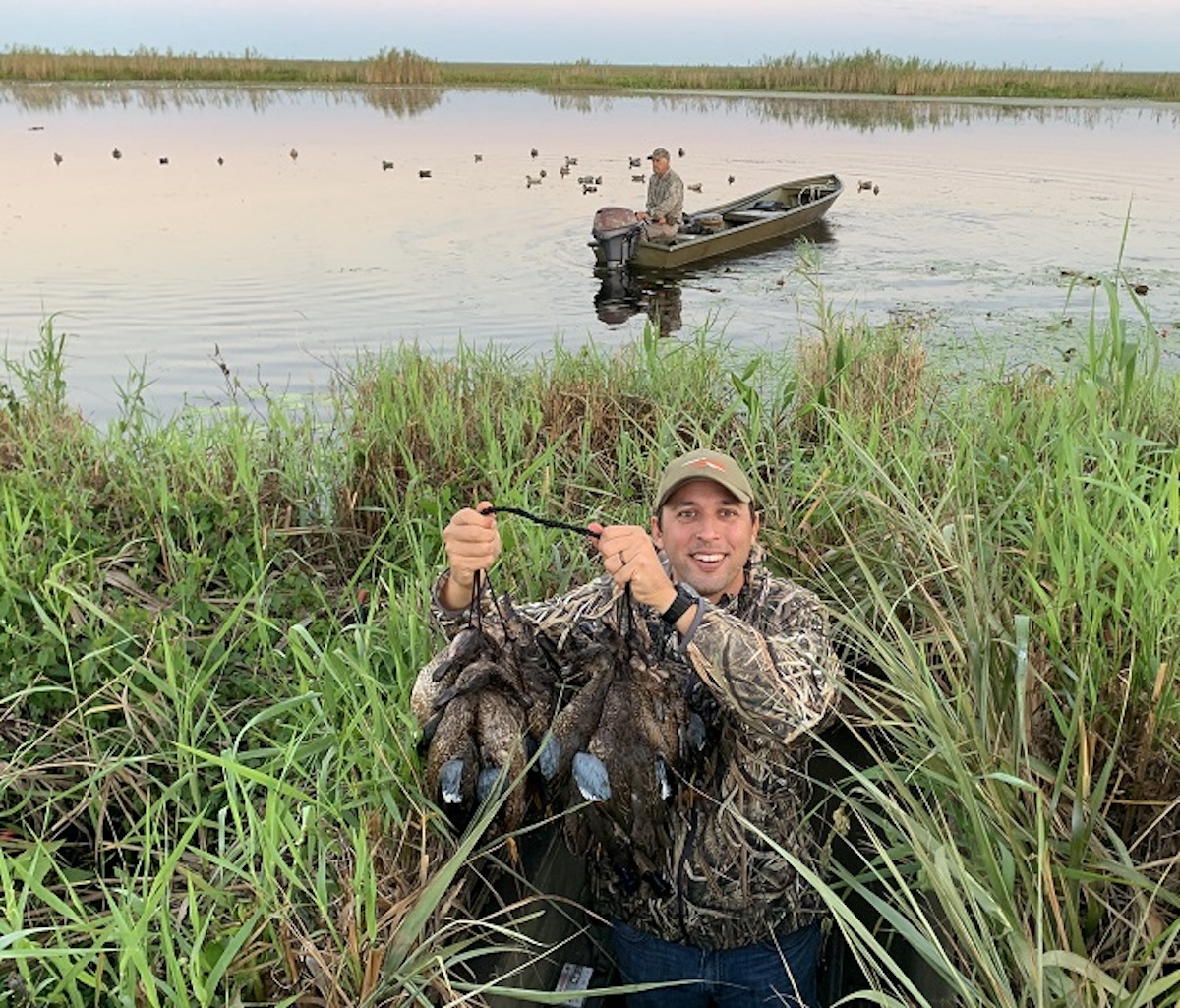
Keith Lusher 10.06.25

Louisiana’s nine-day early teal season closed on September 28 with a dramatic finish that salvaged what began as one of the most disappointing starts in recent memory.
Pre-season surveys painted a bleak picture for the 2025 season. The Louisiana Department of Wildlife and Fisheries September Waterfowl Survey estimated just 101,000 blue-winged teal in coastal Louisiana and the Little River Basin. That number was 32 percent lower than September 2023 and a staggering 49 percent below the five-year average. The mottled duck estimate of 10,000 birds marked the lowest September count ever recorded.
Most teal were concentrated in southwest Louisiana, with the heaviest numbers found in northwest Vermilion and southeast Calcasieu Parishes. However, even those concentrations were historically low, with no single flock greater than 500 birds observed on transects.
Opening weekend reflected those grim numbers. While some hunters managed limits by 8 a.m. in agricultural areas, most reported far fewer birds than typical years. Hunters across the state noted that while opening day produced good results, the second day showed significantly less activity.
The season’s middle days proved even more challenging. Hunters in the Buras and Venice areas report that after a solid opener, the next five days were essentially birdless.
Then everything changed. A late-week cold front brought rain and cooler temperatures that transformed the hunting. Hunters in southeast Louisiana reported that following the minor front, teal numbers exploded with birds blanketing the marshes. Many killed limits on both Friday and Saturday.

In the Biloxi Marsh Wildlife Management Area, hunters echoed similar results. After a tough opening weekend that nearly discouraged further efforts, the final days exceeded all expectations as birds suddenly appeared and remained through the close of season.
Hunters noted unusual behavior from the teal this season. Rather than the typical erratic, fast-paced flight patterns, birds approached decoys with slow, deliberate glides. Others noticed the birds seemed wary and call-shy from the very beginning of the season.
Despite the low bird numbers, Louisiana’s marsh conditions are the best they’ve been in years. With no tropical weather impact so far this season, habitat quality is excellent. Hunters report the feed is in the best shape seen in five to six years, with abundant duck potato throughout coastal marshes.
As duck hunters now look toward the regular season, optimism remains high that if birds arrive, Louisiana’s marsh conditions will hold them.
Trending Products












